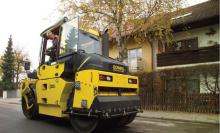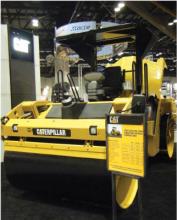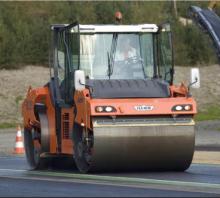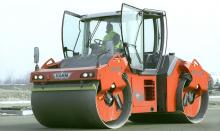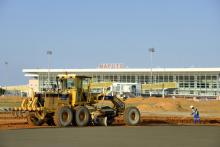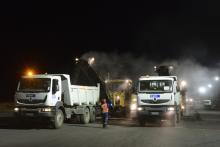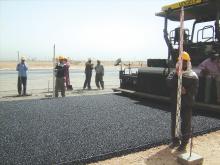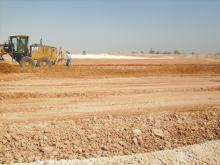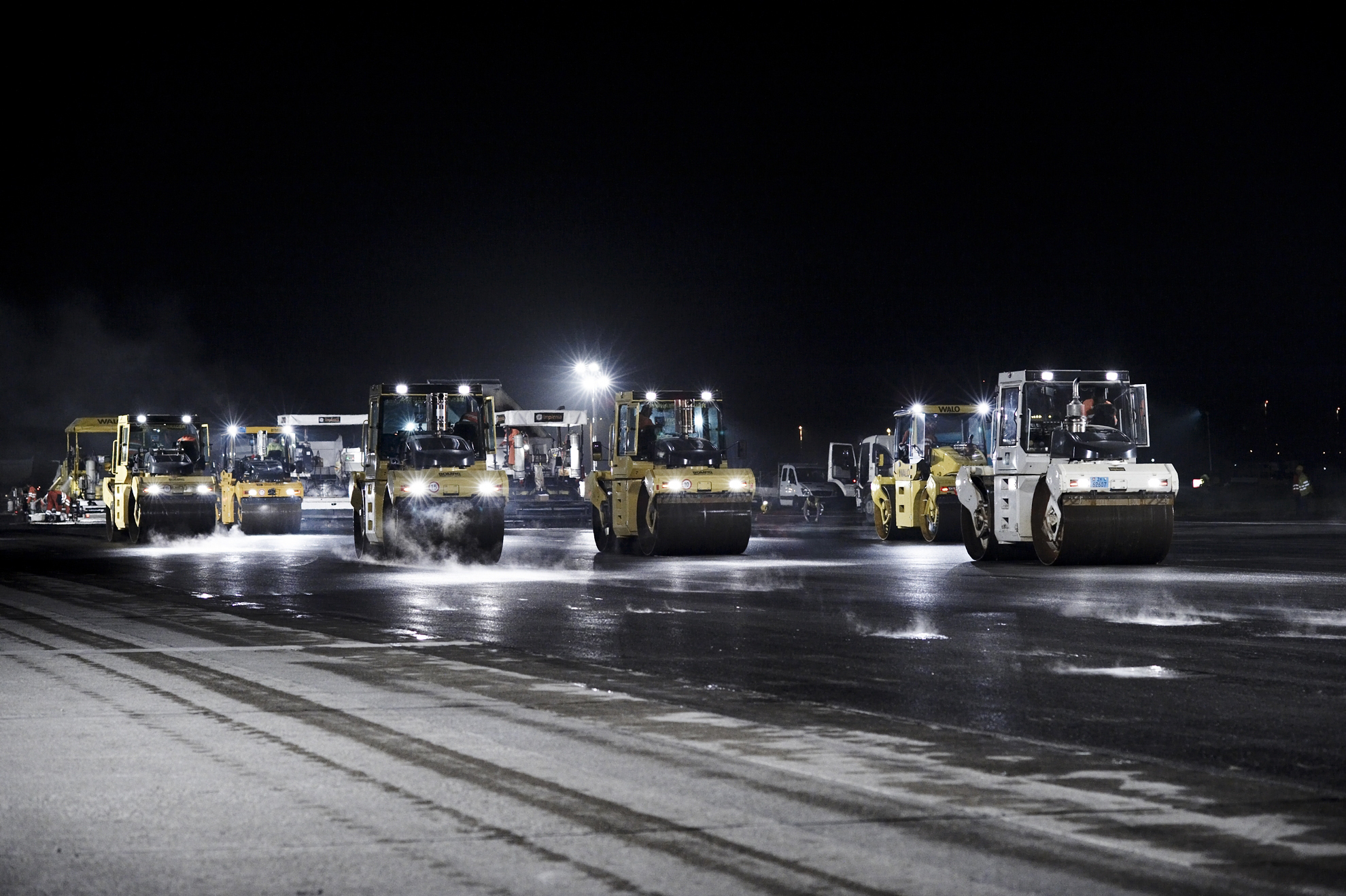
Mike Woof reviews the latest compaction market developments
In the run-up to the upcomingDifferent firms are tackling the current market conditions in different ways. For example,
Technologically, there is certainly a lot of new and improved machinery to choose from as well. Recent high fuel prices have combined with the market conditions to ensure that running costs have come to the fore. Swiss firm Ammann is now using Hatz engines in much of its compaction plate line, as these diesels offer high performance combined with low maintenance needs and economical fuel consumption as well as low noise and exhaust emissions. It offers a wide array of vibratory plates in key performance classes and Hatz engines now dominate in the range. The compact AVP Series feature the 1B20 single-cylinder diesel, while the medium-size reversible plate line is powered by either the 1B20 or the 1B30.
Dynapac is offering four new tandem asphalt rollers in the 7-8tonne and 8-9tonne classes. Standard and split drum versions of the two basic machines are available and high quality finishes can be achieved.
A major product innovation comes from
Three basic versions of these machines are available, as vibratory rollers (VV), as oscillating rollers (VO) and as a high-frequency version for the US market. Drum oscillation will also be available on further additions to the HD+ range as they come to market. The operator is able to opt for drum oscillation or conventional vibration on either or both of the drums if required, with the different capabilities suiting different applications. Drum oscillation is a compaction method pioneered by Hamm and the firm says that this offers major benefits for certain applications as vibration forces are concentrated on the area immediately beneath the drums and are not transmitted as far as when using conventional techniques. This is said to reduce the risk of damage to sensitive structures nearby (such as historic buildings or computer installations) as well as improving compaction efficiency. The frequency and amplitude of the vibratory drives can be adjusted independently for both drums, allowing performance to be matched to the requirements of the asphalt. Hamm is also offering a high-frequency version of the HD+ concept for the US market where high productivity paving is carried out, requiring faster compaction rates.
The control panel on the new Hamm rollers is arranged with related performance functions grouped together for ease of use. Only a few turns of the steering wheel are now required to turn the roller while the operator can set maximum machine speed using the display.
The new three-point articulation joint is a key improvement. Located close to the centre point of the machine it allows for a better weight distribution in turns, ensuring a more even compaction surface, and reducing the risk of compaction marks being left after each pass.
Italian attachment specialist
Compaction in time
A fleet of
The aim was to remove a 23m wide, 3.7km long central concrete strip during night-time work, taking it in sections of up to 70m at a time. At the same time the runway lighting and power supply was renewed, and asphalt laid. The renovated sections were then handed back each morning to Unique, the airport's operating company, on time and ready to handle aircraft immediately. On time meant 5.30 as airport operations could not be interrupted. On some occasions aircraft scheduled to land at 6.00 would be in the air when the contractor started to remove the concrete surface at 23.30 and any overrun would incur hefty penalties.
The machine fleet included 10 pivot steered BOMAG asphalt rollers (BW174 and BW184 models) and while part of the crew was cordoning off the site, excavators with grab buckets were removing a concrete layer up to 350mm thick. On some nights up to 1,000tonnes were shifted in 1.5 hours. The concrete had only just been removed, the subbase meticulously cleaned and the empty pipes laid for the beacon's power supply when the contractor began laying the asphalt. The 250mm thick asphalt base layer was placed in one layer, with low temperature asphalt in temporary storage at the airport being trucked in, spread by dozer and compacted in around eight passes, with by a 100mm asphalt binder layer then laid on top.
As the team's experience of the equipment and the application developed, the crew was able to increase the section lengths from an initial 30m to over 70m after just a few days. At peak times the team was able to place up to 1,500tonnes of asphalt in three hours.
At 4.15am each morning the asphalt specialists Walo and Implenia had to finish, to allow installation of the centre-line beacons. In addition, the airport required that the asphalt surface temperature should not exceed 80ºC. To save time, cleaning and runway marking were carried out at the same time. The final placement of the 40mm thick chip mastic cover layer would have been impossible under the time constraints, so this was carried out after complete placement of the first two asphalt layers. For this, the newly laid asphalt binder layer was milled by 40mm. Subsequently the surface was cleaned and binder was applied and the layers had to be double the strength of those on motorway projects, specifically 28kN/m2.
Six months and 56 million Swiss Franks later, over 52,000m3 of concrete had been removed, over 81,000tonnes of asphalt had been placed, 100,000m of cable conduits were laid and 13,000m of trenches for industrial lines were excavated.

